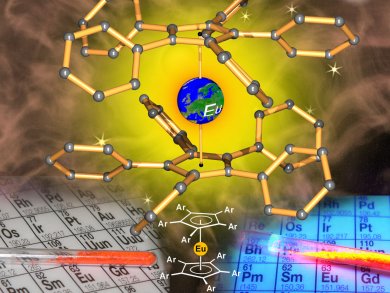Ferrocenes, a class of important and prevalent metallocenes, have gained much attention owing to their unique structure and excellent performance in material science, medicinal chemistry and catalysis.
Therefore, new approaches for the functionalization of ferrocenes are significant in organic chemistry. To date, the direct catalytic C-H (hetero)arylation of ferrocenes is still challenging.
Recently, a research group led by Prof. CHEN Qing’an from the Dalian Institute of Chemical Physics (DICP) of the Chinese Academy of Sciences (CAS) has realized photo-induced catalytic C-H heteroarylation of ferrocenes and ruthenocenes to access pyridyl and pridonyl metallocenes by creating of new C-C bonds.
Their findings were published in Cell Reports Physical Science on Feb. 16.
The researchers found that the protonation of heteroaryl halides probably increased its reduction potential, making it feasible to be reduced by the excited state of photocatalysts.
The newly formed C-C bond was constructed through electrophilic radical substitution of the metallocene with a heteroaryl radical, which was generated via an oxidative quenching pathway.
“This protocol provides a method with mild and concise conditions to access heteroaryl metallocenes which will be of great significance to material science and catalysis.” said Prof. CHEN.
The research was supported by Dalian Outstanding Young Scientific Talent and the National Natural Science Foundation of China.















